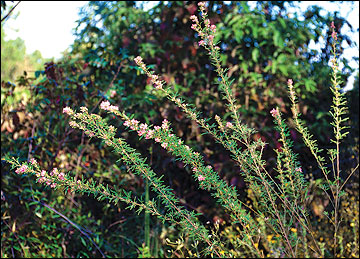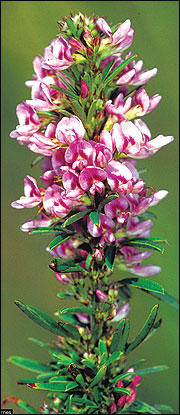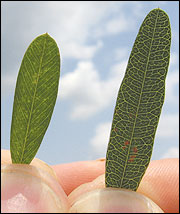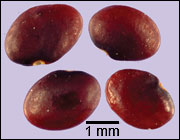Slender lespedeza
- Lespedeza virginica
- Slender bush clover
Forb


 Slender lespedeza's growth form is characterized by long spikes topped with pink flowers. Sericea lespedeza is similar, but is more branched toward the top, with white flowers.
Slender lespedeza's growth form is characterized by long spikes topped with pink flowers. Sericea lespedeza is similar, but is more branched toward the top, with white flowers.
©Tom Barnes, University of Kentucky
Description
Slender lespedeza is among our most common native lespedezas in the Midwest and may be found throughout the region. Leaves are divided into three leaflets 1 to 1-1/2 inches long and less than 1/4 inch wide. Stems are upright, up to 3 feet tall. Flowers are pink to purple and occur in clusters toward the top of the plant.
Caution
This species closely resembles sericea lespedeza (L. cuneata), an aggressive introduced species that frequently displaces desirable plants and plant communities. Landowners should learn to differentiate the two and work to eradicate sericea. The easiest way to identify sericea is to hold the leaf up to the sky and observe the veins. Sericea has pinnate veins, while slender lespedeza's veins occur in a netlike pattern.
Bloom period
May to October
Use by bobwhites
Quail eat the seeds of this plant and may use it for brood rearing as well. It tends to grow on poorer soil than roundhead lespedeza and can be found on prairies, glades, savannas, woodlands and old fields. With less grass competition, seeds are often easier for quail to find.


